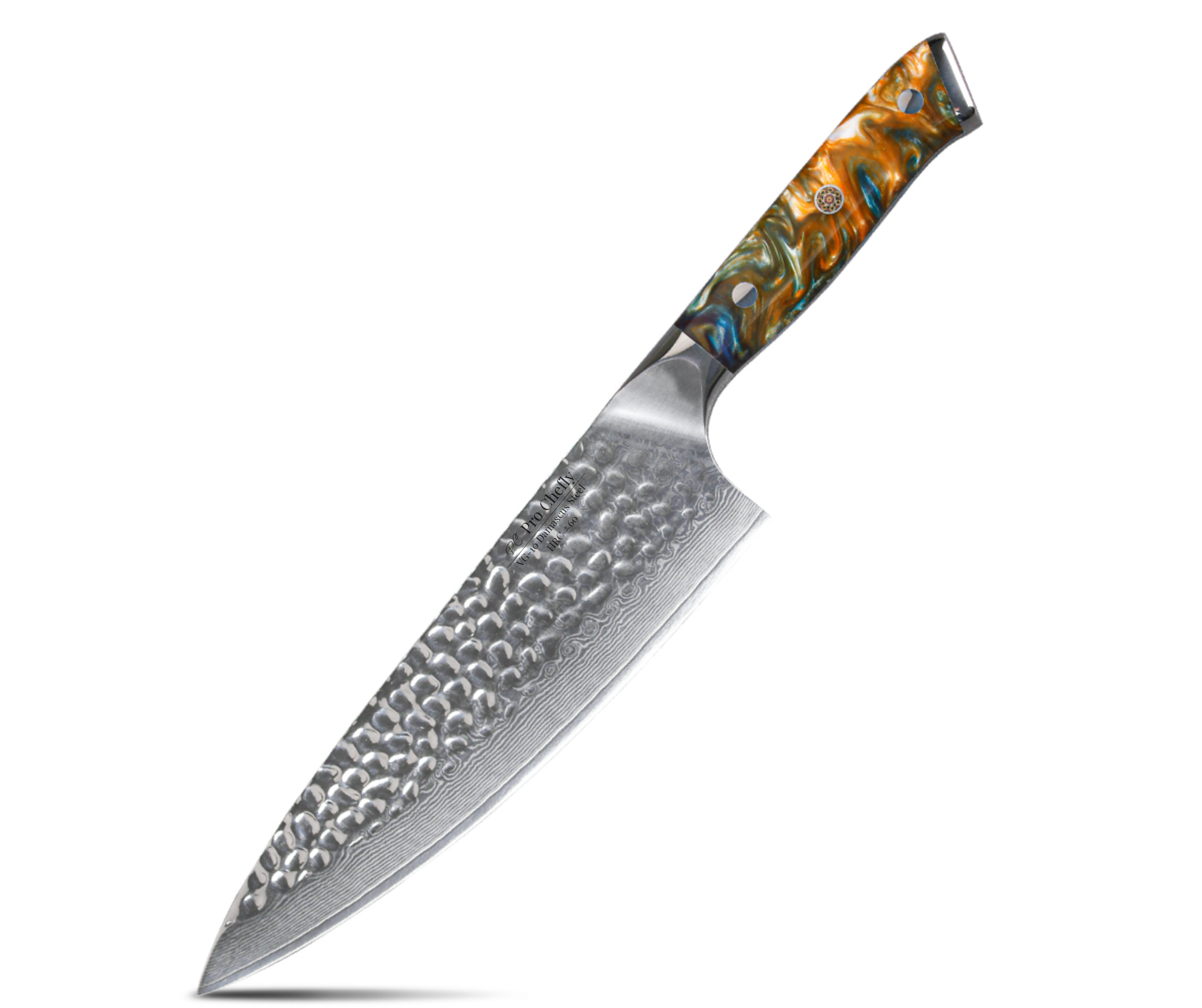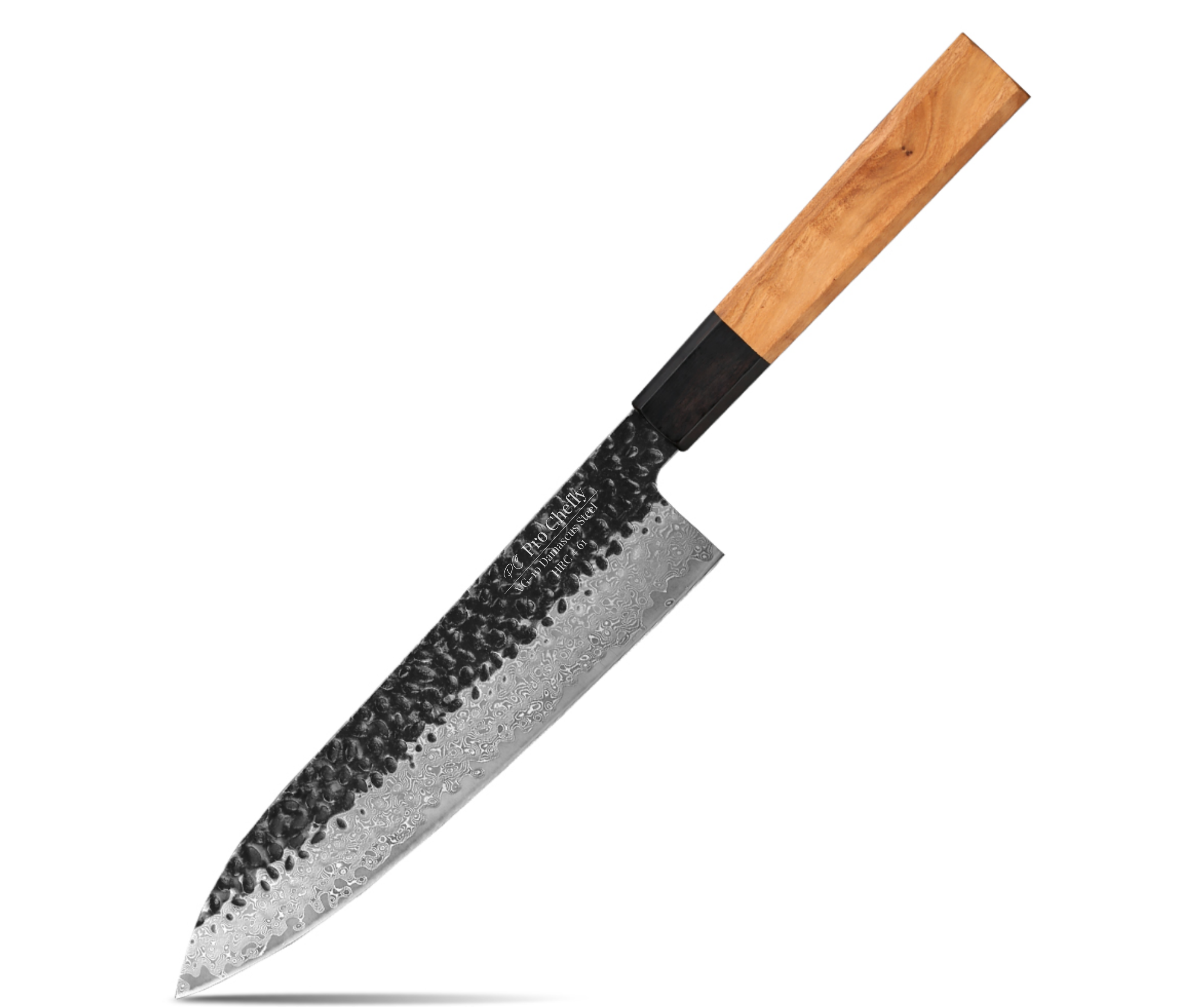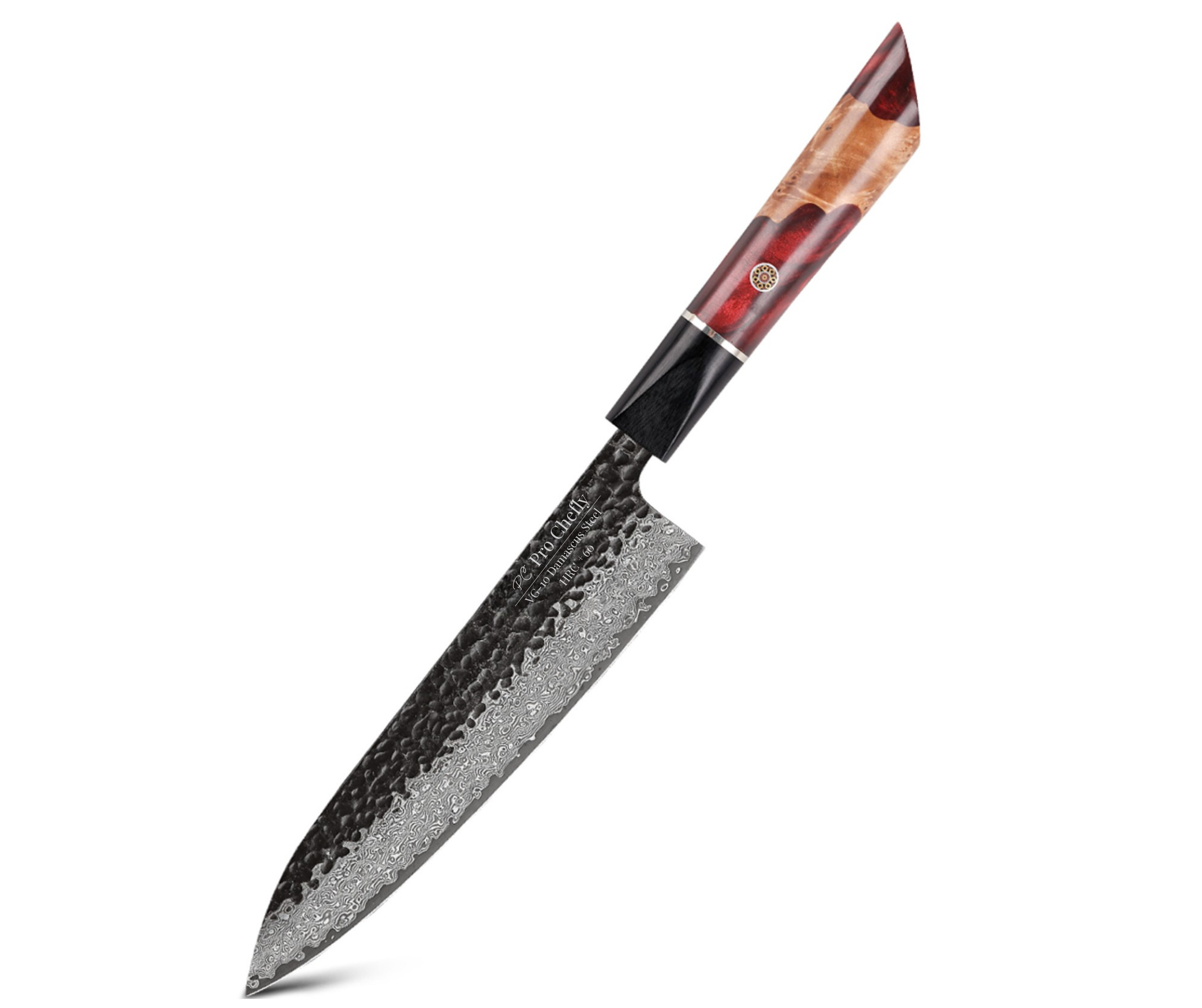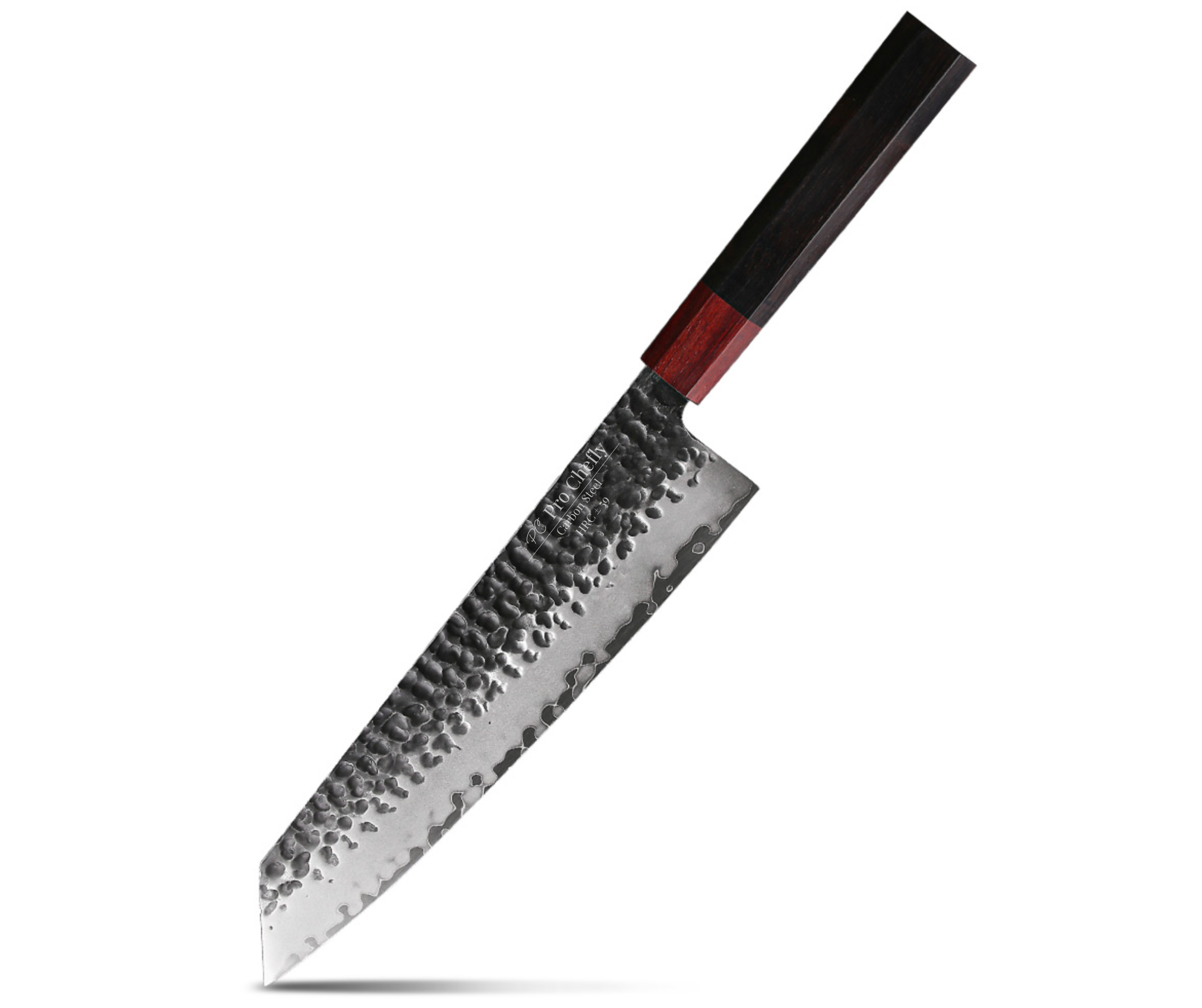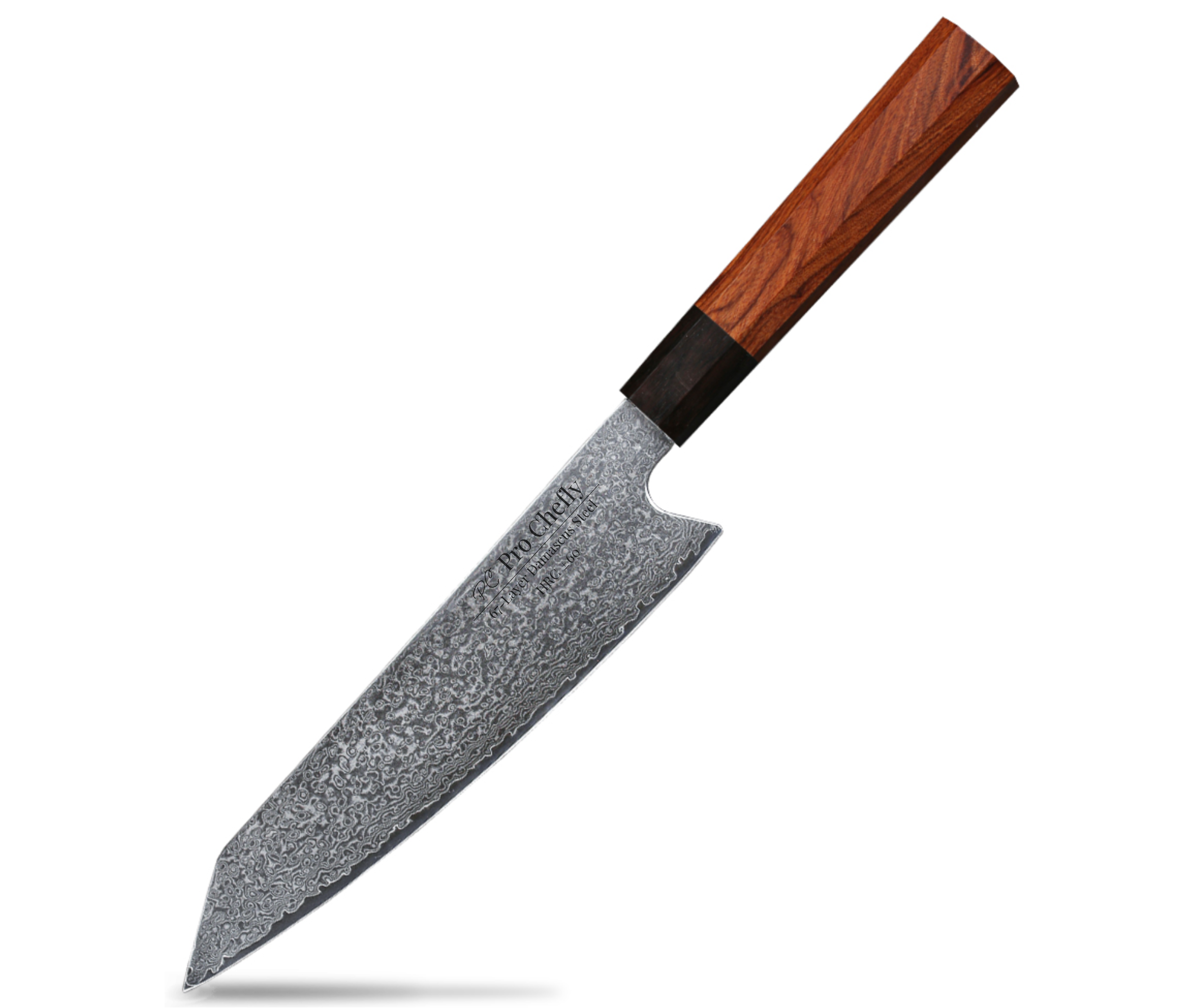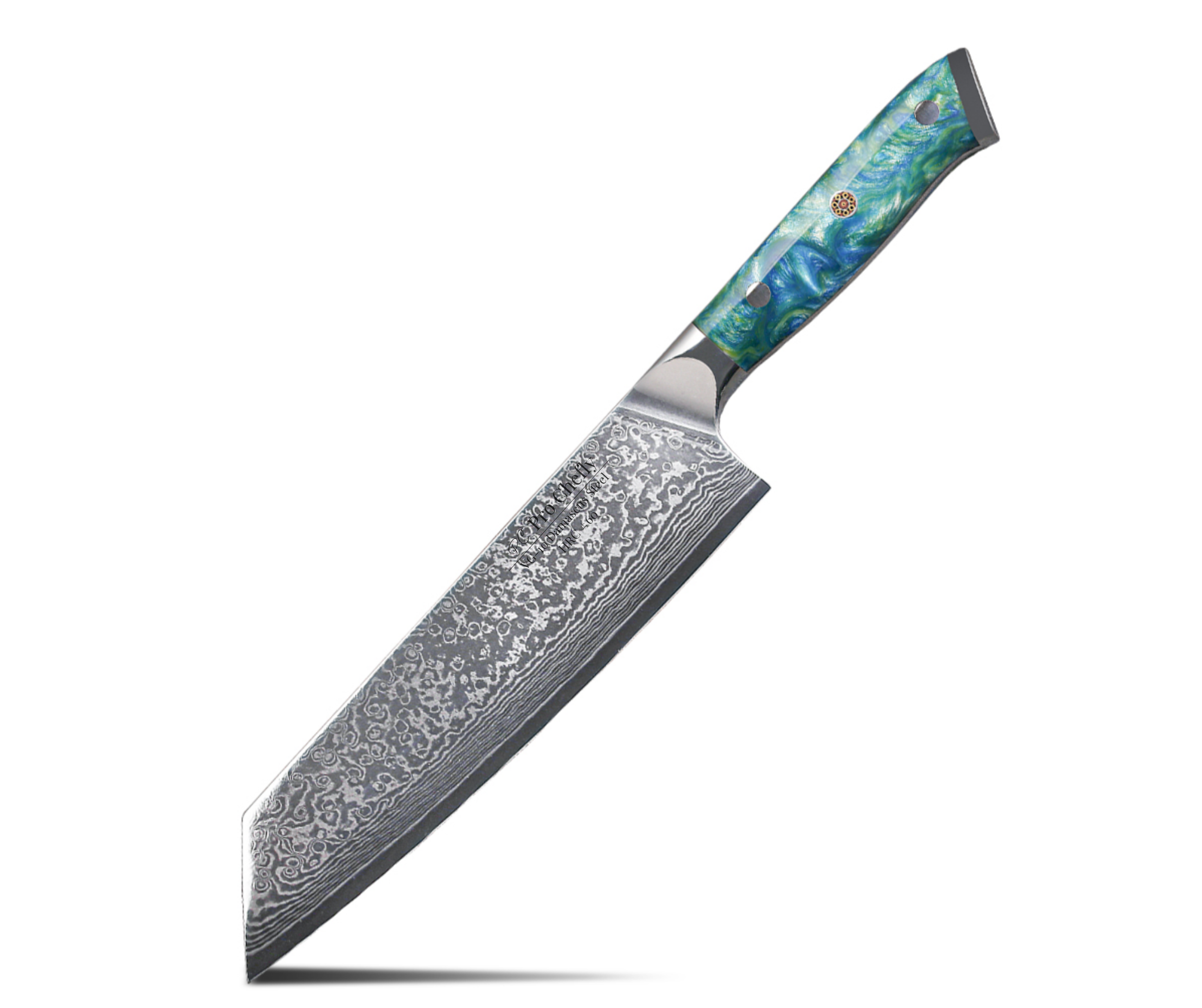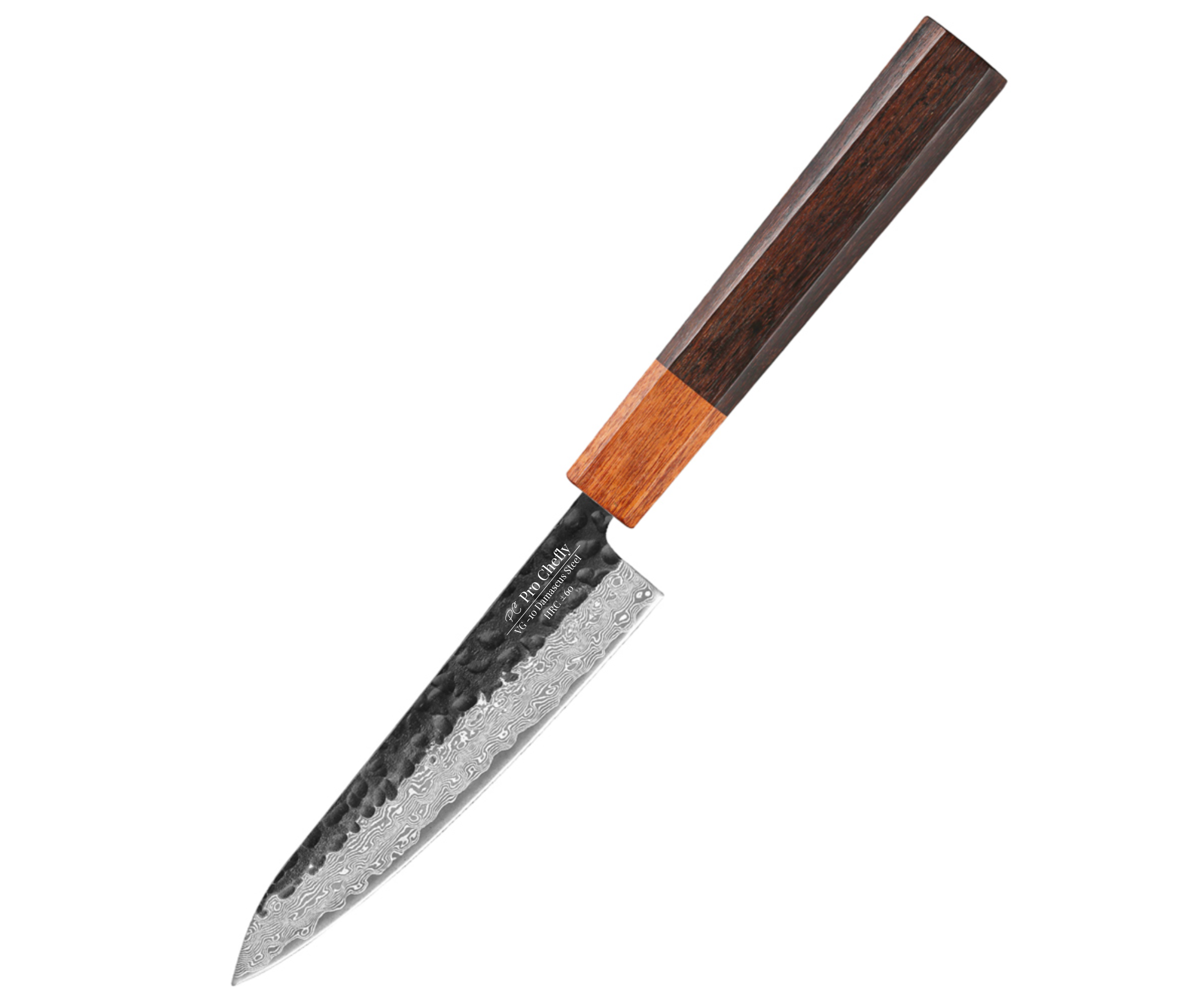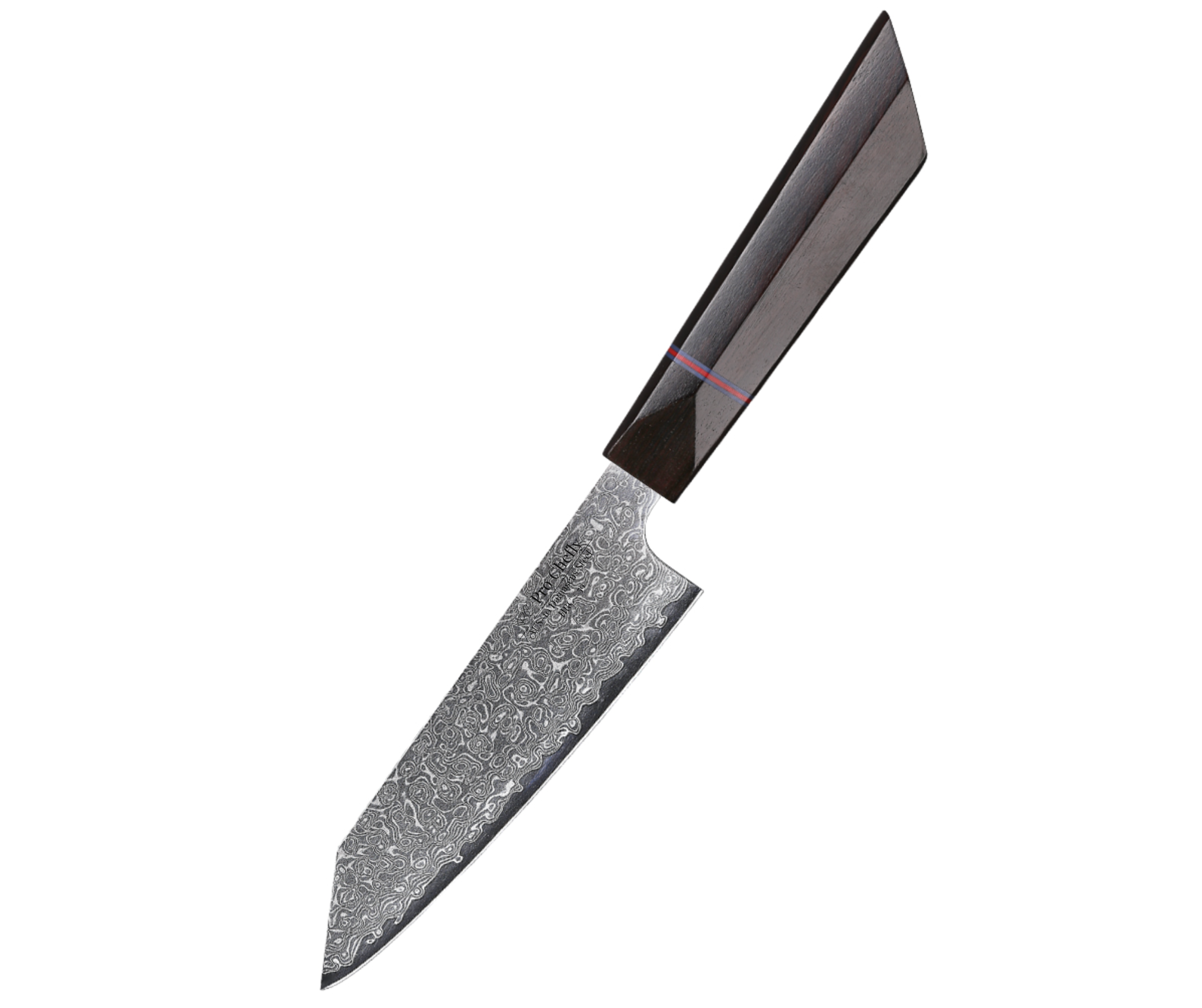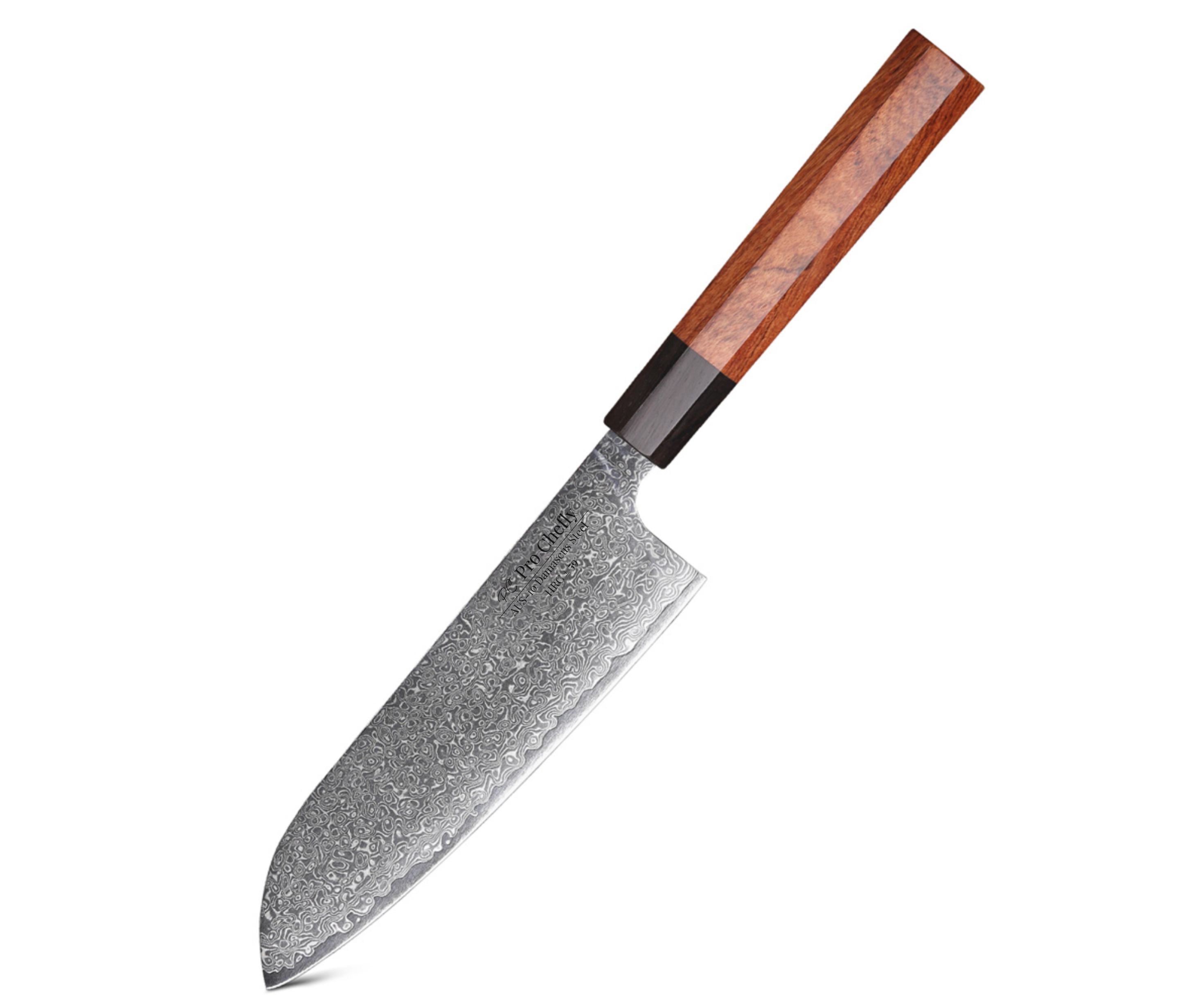Chef’s Overview
Dear Chefs, when autumn rolls in and the kitchen fills with the scent of roasted squash, seared meats, and caramelized onions, the right knife becomes your silent partner in creating something magical. Today, we’re slicing into a spirited comparison between two kitchen legends: the Gyuto and the Chef knife. Both have earned their place at the cutting board, but which one truly reigns supreme when you’re prepping those hauntingly good fall dinners? Let’s find out where tradition, precision, and a touch of mystery meet.

The Gyuto Knife – A Japanese Classic with Modern Power
The Gyuto, often called Japan’s answer to the Western Chef knife, is revered for its balance, thin profile, and razor-sharp edge. Originally designed for slicing meat and fish, this knife has evolved into a versatile, all-purpose kitchen tool. Its acute edge makes it ideal for precision cuts—think paper-thin shallots or even slices of roasted pumpkin.
Why Chefs Love the Gyuto Knife
Compared to heavier Western models, the Gyuto feels lighter and more agile, reducing fatigue during long prep sessions. A well-crafted Gyuto, like the 8" VG-10 Damascus Gyuto glides effortlessly through dense fall ingredients with supernatural ease. As discussed in What Is a Gyuto Knife and Why Do Chefs Trust It for Spooky Season Feasts, its design makes it perfect for chefs who value finesse over force.
The Craftsmanship Behind Japanese Steel
Gyuto knives are typically made with VG-10 or AUS-10 Damascus steel, known for their edge retention and beauty. The layered Damascus pattern isn’t just aesthetics—it reflects the precision and history behind Japanese knife-making. This steel construction ensures your knife performs flawlessly, whether slicing through roasted meats or delicate fall vegetables.
The Western Chef Knife – Built for Bold Cuts and Hearty Prep
If the Gyuto is a master of finesse, the Western Chef knife is the powerhouse of precision and strength. Designed for durability and versatility, it handles tough, thick-skinned produce like butternut squash or pumpkin with ease.
The Benefits of a Western Chef Knife
The Chef knife’s thicker spine and curved belly allow for rocking motions when chopping herbs or mincing garlic. It’s ideal for repetitive tasks that require stability and control—especially when you’re prepping roasted carrots, hearty stews, or carving fall roasts. The 8" VG-10 Damascus Chef Knife from Pro Chefly offers that perfect balance of comfort and control, making it a go-to for both professional chefs and serious home cooks. As we mentioned in What’s the Difference Between a Chef Knife and a Santoku Knife, the Western blade shape makes it excellent for quick, efficient chopping and slicing.
When Power Meets Precision
A Western Chef knife’s weight gives you leverage. It’s the knife that feels reassuring in your hand when breaking down large ingredients or trimming meats. Combined with Pro Chefly’s Damascus craftsmanship, the result is a blade that feels alive—strong, sharp, and ready for any culinary challenge.
Choosing Between the Two – Which Blade Should You Wield This Fall?
When it comes to hauntingly good fall dinners, the best knife depends on your personal cooking style and the type of prep work you do most.
Go for the Gyuto If You Prefer:
-
Precision slicing and thin cuts
-
Lightweight agility for long prep sessions
-
Japanese steel craftsmanship and razor edges
-
Artistic plating and delicate presentation
Choose the Chef Knife If You Value:
-
Heavier weight and balanced power
-
All-purpose cutting for larger ingredients
-
Rocking motion versatility
-
Strength and stability under pressure
As highlighted in Western vs Japanese Chef Knives: Which Is Better for You, both knives serve a purpose—the trick is knowing which one matches your rhythm in the kitchen.
Why Pro Chefly Knives Elevate Fall Cooking
At Pro Chefly, every knife is crafted with both art and performance in mind. Whether you reach for the 8" VG-10 Damascus Gyuto or the 8" VG-10 Damascus Chef Knife, you’re getting blades designed to enhance your creativity and precision. Our Damascus and Japanese steel knives are engineered for those who view cooking as a craft—where every slice tells a story and every cut carries intention. As explored in Why Chefs Choose Damascus Steel Knives for Precision and How VG-10 Steel Balances Edge Retention and Durability, Pro Chefly knives aren’t just tools—they’re companions in every dish.
The Final Cut – A Fall Feast to Remember
Picture it: seared steak, roasted pumpkin wedges glazed in butter, and a deep red reduction sauce that catches the candlelight. Each slice clean, each cut deliberate. Whether your hand reaches for the agile Gyuto or the steadfast Chef knife, both embody the balance of artistry and power that fall cooking deserves. Cooking, after all, is about connection—between you, your craft, and your tools. This season, make your kitchen your stage and your knife the star of the show.
Knife Collections
Shop the latest in Pro Chefly Damascus Knives
Chef's Notes
Stay up to date with the latest kitchen stories and recipes

- December 05, 2025
Dear Chefs, the holidays deserve a dish that feels slow, soulful, and unforgettable — and few things capture that spirit...

- November 30, 2025
Dear Chefs, there is something unmistakably comforting about bread pudding in November — the way the custard soaks into the...

- November 25, 2025
Dear Chefs, there is something special about roasted carrots in the fall — the way they caramelize, the way their...

- November 20, 2025
Dear Chefs, there is something magical about fall stuffing, especially when pumpkin and sage join the party. The aroma alone...

- November 15, 2025
Dear Chefs, November has a rhythm of its own — a slower pace, a softer light, and a craving for...

- October 31, 2025
Dear Chefs, fall baking is a ritual — the scent of cinnamon in the air, pecans roasting low and slow,...
- Choosing a selection results in a full page refresh.
- Opens in a new window.
